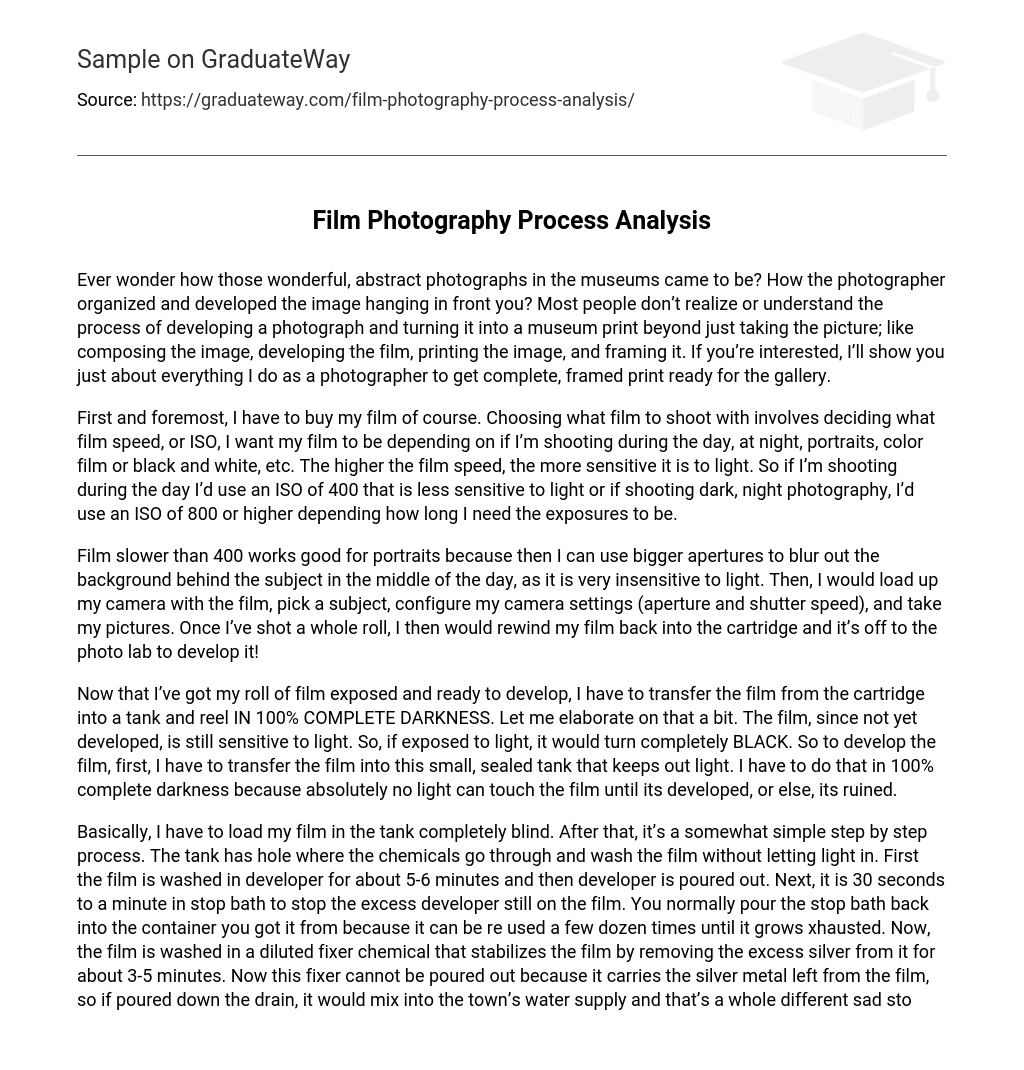Have you ever been curious about the process behind creating captivating abstract photographs in museums? Wondered how photographers carefully arrange and develop the images that are displayed before you? Many people are unaware of the detailed steps involved in transforming a photograph into a museum print, which go beyond just taking the shot. These steps encompass composing the image, developing the film, printing the photograph, and framing it. If you’re interested, I will walk you through each step I take as a photographer to produce a final print that is prepared for exhibition in a gallery.
When buying film, the first step is to choose the desired film speed or ISO. Factors like the time of day and the subject of the photos influence this decision. A higher film speed means it is more sensitive to light. For daytime photography, a less light-sensitive ISO of 400 is recommended. However, for low-light or nighttime photography, an ISO of 800 or above should be chosen depending on the desired exposure length.
When it comes to portraits, using film slower than 400 is perfect. This type of film lets me open up the aperture wider during daylight, resulting in a beautifully blurred background behind my subject. To get started, I load my camera with the chosen film and adjust my camera settings (aperture and shutter speed) before taking any pictures. After shooting an entire roll, I then rewind the film back into its cartridge and take it to the photo lab for development.
Now that my roll of film is exposed and ready for development, I need to transfer it from the cartridge into a light-sealed tank and reel. It’s crucial to carry out this step in complete darkness as the film is still light-sensitive and any exposure would result in it turning black. Therefore, before I can develop the film, I must ensure that it is transferred into the sealed tank without any light touching it; otherwise, it will be ruined.
The film is placed blindly in a tank with a hole for chemicals and to prevent light. Initially, the film is developed for 5-6 minutes before removing the developer. After that, it goes through a stop bath for 30 seconds to one minute to halt excess developer residue. Typically, the stop bath can be reused by pouring it back into its original container until depleted. Then, the film is soaked in diluted fixer chemical for approximately 3-5 minutes to stabilize it by getting rid of surplus silver. However, it is not advisable to pour the fixer down the drain since it contains traces of silver that could contaminate the town’s water supply. Instead, proper disposal at a sewage treatment facility is recommended.
Afterwards, I would soak it in hypo eliminator for approximately 2 minutes to remove the fixer, which can be safely disposed of down the drain. Subsequently, the film is rinsed with running water for 5 minutes. I can then retrieve the film and expose it to light, allowing it to dry before storing it in an archival sleeve. Now, I can utilize the film negatives from the photo shoot to produce an image. This process involves using light-sensitive paper and enlargers in a darkroom. Enlargers can be likened to giant microscopes with a large lens that magnifies the image on the negative to match the size of the paper used (e.g., 5”x7”, 8”x10”, 11”x14”, etc.) with the aid of light. Firstly, I would select the negative I wish to work with and fit it into the enlarger. Following that, I must determine the appropriate settings to accurately expose the light-sensitive fiber-based paper and create an enlarged image. These settings are comparable to aperture and shutter speed adjustments on a camera, regulating the amount of light that reaches the paper. Insufficient exposure will result in a light or even blank outcome.
If you overexpose the paper, it will become too dark or completely black. Therefore, after determining the correct settings, I use the enlarger to expose the paper to light. The process of developing the paper is similar to film development. However, the timings differ. The paper stays in the developer for 2 minutes, then moves to the stop bath for 1 minute. Next, it spends 8 minutes divided into two separate fixer baths. Finally, it takes 30 minutes to completely wash off all the chemicals from the print. After completing these steps, the paper can be left to dry.
After the image is dry, I attach it to mount board by applying glue to the back of the image and pressing it together with tissue paper and the board using a heat compressor. Once it is framed, it is ready for display in a gallery. However, finding a gallery that will accept your image is another challenge altogether. Hopefully, this gives you insight into what happens after capturing a picture with a camera. When you visit a photographic museum in the future, you can better appreciate the effort and determination required to create the images displayed and understand why they come with a high price tag!





